Open educational resources

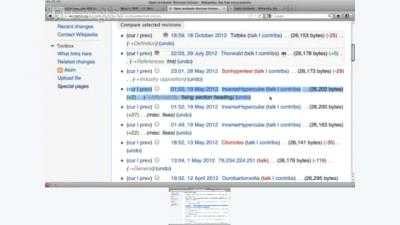
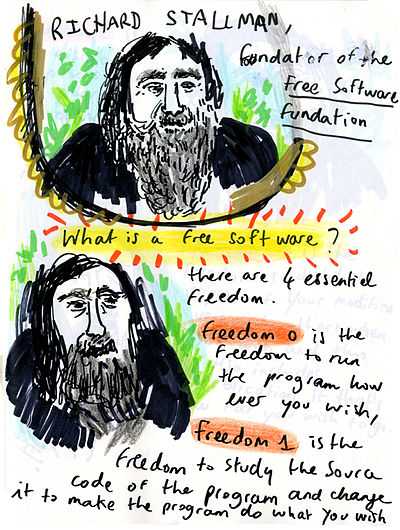
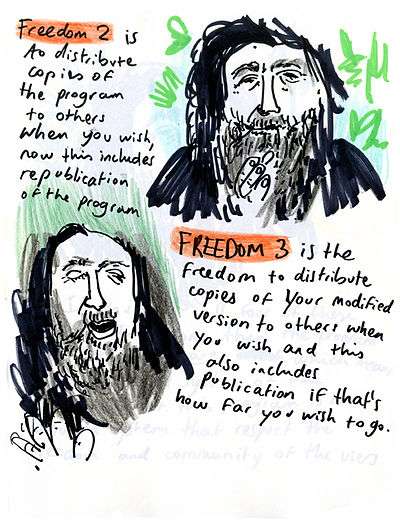
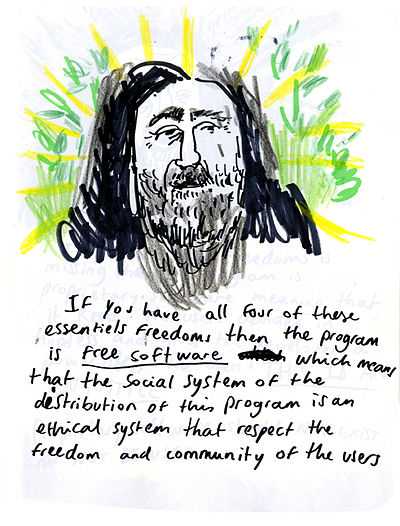
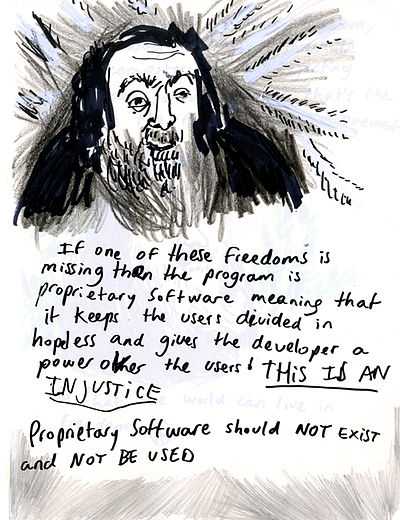
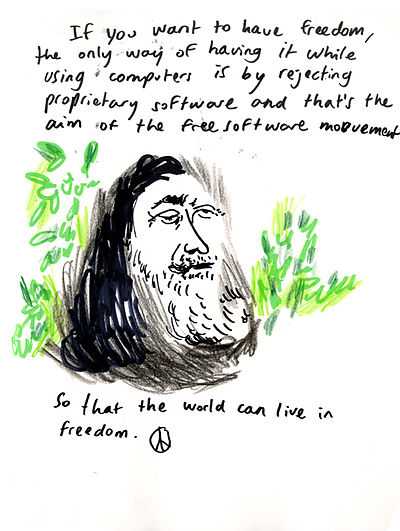
Open Educational Resources (OER) are documents, media, software and processes that are useful to teaching, learning, education and assessment, and that are made openly accessible and reusable by anyone for any purpose, free of barriers or restrictions.[1]
To achieve this, OER is typically (but not only) published and distributed through the Internet, in a format that can be freely used and modified, carrying a copyright license that permits free and unrestricted reuse - provided the original author is attributed, and sometimes provided derivatives are republished with the same reusable copyright.
This resource aims to bring some clarity to what OERs are, and how people can use them.
Who
OER has a number of interests, from international agencies like the United Nations, through to individual practitioners who share many of the principles and values. This section highlights some of these interests.
Wikimedia Foundation
By far the largest and most flexible platform for OER is the Wikimedia Foundation, hosting and administering multi lingual and open source sites like Wikipedia, Wikimedia Commons, Wikibooks, Wikiversity and many others. Wikipedia alone is now the world's 6th most visited website,[2] and the other projects are linked to that in various ways.
UNESCO
UNESCO is a very early proponent of OERs and they are accredited with establishing the phrase OER.[3]
OECD
The OECD published a 147 page report in 2007 called, Giving Knowledge for Free. The emergence of open educational resources.[1]
William and Flora Hewlett Foundation
The Hewlett Foundation has granted hundreds of millions of dollars to open educational development, in California and Internationally, for over 10 years.
OER Foundation
Funded by the Hewlett Foundation and supported by the Commonwealth of Learning, Otago Polytechnic, and Athabasca University, the OER Foundation administers the Wikieducator project and the Open Education Resources University.
Free Software Foundation
The Free Software Foundation supports the use of free software in schools and universities.[4][5]
Others
- Peer to Peer University (P2PU)
- Eliademy offers teachers to crowdsource their online courses.
What
OER has a number of characteristics, benefits, challenges, limitations and opportunities.
Characteristics
OER derives its name from the free software movement - often conflated with the open source software movement. Since 1986 free software has operated around 4 key principles of freedom/openness and in many respects these principles can and do transfer to OER:[6]
- The freedom to run the program for any purpose.
- The freedom to study how the program works, and change it to make it do what you wish.
- The freedom to redistribute copies so you can help your neighbor.
- The freedom to improve the program, and release your improvements (and modified versions in general) to the public, so that the whole community benefits.[7]
Practically speaking though, OER has the following characteristics:
- Freely accessible content, media and resources
- Freely reusable copyrights and formats
- Design is considerate of bandwidth and accessibility
- Freedom and openness as principles in their production and use
Benefits
- Accessible - in terms of being free of restriction, password access, fee for access, or format limitations, but also in terms of bandwidth minimization, and usable for people with disabilities.
- Minimal cost - Not only are resources cost-free wherever possible, the medium of their distribution should not presuppose expense in hardware, software or resources. For example, media which requires high bandwidth and large data costs for both the user and provider. Media in formats that require proprietary software or specialist skills to edit and modify, may present software licensing and expertise costs.
- Reusable and adaptable - The copyright explicitly permits reuse (including republishing, modification, and commercial uses), the format doesn't restrict access or reuse, and very often the resource is editable in-situ - such as a Wikipedia page.
Challenges
- Cost-shifting - costs are shifted away from the end-consumer, born by others instead.
- Consumer relationship - Where openness extends to production process, 'consumers' may become 'producers' and vice-versa.
- Copyright - Copyright licenses that permit or restrict reuse, derivative productions, or commercial use create a range of challenges for libraries, repositories, producers and consumers.
- Skills - many aspects of OER demand new and alternative perspectives to 'mainstream' views on content ownership and value, copyright, format and publishing venue. These can become significant challenges to professional development and simply learning about OER.
- Cultural dominance and globalisation - where OER is primarily produced by educational institutions within industrialised economies, and ones with the most resources for that production. This risks the relegation of people from non-industrialised economies, minor educational institutions, and alternative approaches to education, to the consumption of information less than the production.[8]
Limitations
- Quality assurance - if anyone can create, adapt and republish an OER, how can we be sure of its quality?
- Adaptability - as is often the case with teaching, context is a major consideration, and it may often be that a resource isn't immediately suitable, and requires adaptation. This is called a reusablity paradox.[9]
- Legalities - Many educational institutions claim ownership of the intellectual property created by staff. This can limit the ability of staff to engage if that institution's policy is to also limit publication on outside websites, and with copyrights other than All Rights Reserved. Such a policy can also limit the reuse of OER that requires a Share Alike copyright license be applied.
Opportunities
- Quality can be improved and costs can be reduced by sharing resources in copy editing, copyright control, media repositories and publishing platforms
- Increase rapid development of new learning resources and improve development practices locally[10]
- Publish accessible and adaptable information
- Expand access to learning and educational services, and achieve wider participation in education
- Promote fee-based services such as tuition, formal assessment and accreditation
- Obtain publicity and develop public relations
- Reduce the costs of maintaining closed, exclusive and restricted access and reuse of resources[1]
When
History
- Free and open software
- Share-able learning object theory
- Open and Distance Learning meets Free and Open Source Software
- MIT's Open Courseware Initiative 2001
- UNESCO coins the phrase 'OER' in 2002
- The Capetown Declaration 2007
- More info on Wikipedia article for OER, in the History section
Now
- The Wikimedia Foundation projects
- Massive Open Online Courses (MOOCs)
- Open access to research
- Legislation, policies and funding
Future
- Open educational resources and globalization - a panel discussion problematising OER as being global in outlook, where cultural difference is not yet considered
- Napster, Udacity and the Academy - Clay Shirky offers an opinion that MOOCs disrupt education in the same way that MP3 disrupted the music industry
- How 'open' are MOOCs - Clay Shirky questioning the trend to close up MOOCs
How
Because OER is poorly defined to date, there are some traps and pitfalls to watch out for when using OER. Primarily copyright, publishing platform and format are the 3 areas to watch. Many publishers of "OER" restrict reuse via these three areas. They often apply copyrights that restrict to Non-commercial or Non-derivative uses, or they publish on platforms that either technically restrict use (such as Youtube not offering file download features), or they use formats that require proprietary software to access and modify the resource. There are ways around all these issues of course, but they can be time consuming, require skill and software, and ultimately amount to barriers and costs.
If you start with the projects under the Wikimedia Foundation however, this includes Wikipedia, Wikibooks, Wikiversity and Wikimedia Commons (as well as several other project spaces), their operating principles require the use of free copyrights, free formats, and obviously using platforms that make it simple to copy and modify works. These project spaces are user generated however, so some caution still needs to be observed in the use of resources found there. In some instances, 3rd party copyrights may not have been properly observed for example. The larger projects like Wikipedia and Wikimedia Commons however, have a very large user base and these oversights are usually dealt with quickly. The smaller projects however, have less users participating, and so errors can exist for longer.
How to find and identify OER
- Wikimedia Commons - User generated images, video, audio, diagrams, graphics and illustrations, in multiple languages, all free for reuse.
- Wikipedia - User generated encyclopedia reference texts, in multiple languages, including discussion forums on every entry, project portals for subject ranges, and all edit history recorded.
- Simple English Wikipedia - Similar to Wikipedia, but that articles are written in plain English
- OER Knowledge Cloud, a UNESCO/COL project. Includes a list of journal articles
- OER Portals and Gateways
- OER Repositories
- OER Commons is one of the largest guides to OER, with over 10,000 resources cataloged, drawn from many other OER sites.
- Wikiversity's list of open educational resources at other sites
How to contribute OER
- Directory of Open Access Journals (DOAJ): Free, full-text, quality-controlled scientific and scholarly journals
- OER development and publishing initiatives
- OER Tools
What to look out for
- Evidence Hub for Open Education at OLnet
How to reuse OER
- Organizations advocating for open educational practices can provide valuable sources for citation, like this one: http://www.psychologicalscience.org/index.php/members/aps-wikipedia-initiative
Policy for OER
- OER Policy Registry from Creative Commons
- Giving Knowledge for Free: The Emergence of Open Educational Resources, 2007. ISBN 9789264032125
- JISC OER impact report - UK-focused qualitative view of the impact of OER on academic staff
- Blog posts like this one document a variety of open educational practices. We should consider the best way to capture the knowledge expressed in such posts, while keeping in mind that blogs run by individuals are not particularly high quality sources (per WP:RS).
See also
- Introduction to Open Educational Resources
- Open educational resources and globalization
- Developing high quality educational resources
- Introduction to Learning Objects
- Composing free and open online educational resources
- Classifying educational resources
- Libre knowledge
- Open Education Week 2013
References
- 1 2 3 OECD. (2007) Giving Knowledge for Free: The Emergence of Open Educational Resources. ISBN: 9789264032125
- ↑ http://www.alexa.com/topsites Alexa Web Statistics Top Sites]
- ↑ Johnstone, Sally M. (2005). "Open Educational Resources Serve the World". Educause Quarterly 28 (3). http://www.educause.edu/EDUCAUSE+Quarterly/EDUCAUSEQuarterlyMagazineVolum/OpenEducationalResourcesServet/157357. Retrieved 2010-11-01.
- ↑ Free Software Foundation Europe (ed.): Free Software in Education. Retrieved on 16 May 2013.
- ↑ Jean Peyratout; Free Software Foundation Europe (ed.): Why give precedence to Free Software at school?. Retrieved on 16 May 2013.
- ↑ Downes, S. (2008) Open Content, Enclosure and Conversion. Half an Hour Blog. Retrieved Nov 2012.
- ↑ GNU's Bulletin, Volume 1 Number 1, page 8.
- ↑ Mulder, J. (2008) Knowledge Dissemination in Sub-Saharan Africa: What Role for Open Educational Resources (OER)?. Master’s Thesis International Relations. International School for Humanities and Social Sciences, University of Amsterdam
- ↑ Wiley, D. (2001) The Reusability Paradox. Connexions
- ↑ Blackall, L. (2010) Giving a brief talk at Parliament House. http://leighblackall.com. Retrieved Nov 2012.
External links
- Amazing stories of openness (Alan Levine)
- OER Handbook (WikiEducator)
- OER Course Collaboratory (WikiEducator)
- Organisation for Economic Co-operation and Development's OER study
- UNESCO International Institute for Educational Planning's OER wiki about OER development
- OER Grapevine - a wiki and email list bringing OER project leaders together to brainstorm on OER development issues and strategies
- Software and Community in the Early 21st Century Eben Moglen's keynote address at the Plone Conference 2006
- Eben Moglen explains openness: Eben Moglen on Free Software and Social Justice
- The Cape Town Open Education Declaration
- Open Source Physics
- Open educational resources (University of Michigan)
- Open Learning Initiative Open and free courses from Carnegie Mellon University
- Open Learning: The Journal of Open and Distance Learning, Volume 24 Issue 1 2009 - Open Educational Resources